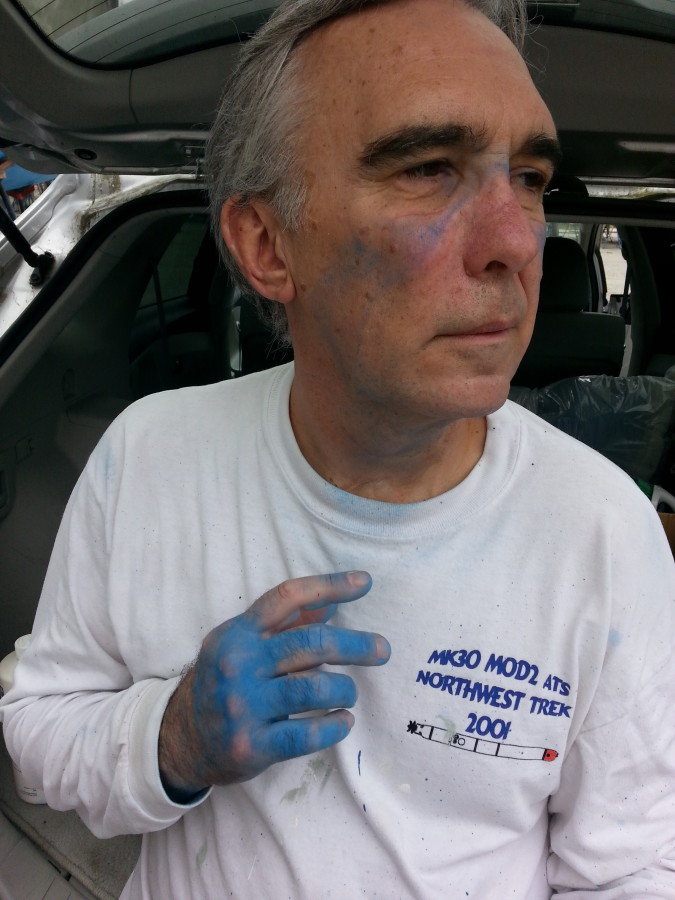It’s boating season again, the time we scurry around like worker bees doing all the things we need to do to get the boat into the water so that in a few months we can do all those things in reverse to take her out. Yes, our season is very short. Eventually we’d like to sail down the Intercoastal and leave her to over-winter there for a season, playing in the Florida and Caribbean waters. But lets take things one step at a time, like making her seaworthy for right now.
I handed them tools and counted Bob’s injuries to keep track of how many beers we’d be buying him that afternoon.
There are things in boats I don’t think about, as I don’t see them regularly. If an instrument doesn’t work it’s immediately visible. We lose the knot meter or the depth sounder and we know it. If the stuffing box is leaking I’d have no clue unless I went into the engine compartment and looked at it, something that is not routine. Guess what? It is NOW.
What, most of you are asking, is a stuffing box? Well, it has nothing to do with Stove Top® or Thanksgiving. On a boat having an inboard motor that turns a shaft attached to an external propeller, the shaft passes though said stuffing box. The stuffing box prevents seawater from entering the boat’s hull. A sound stuffing box installation is critical to safety because failure can admit a catastrophic volume of water into the boat. Yes, really. Like sinking catastrophic.
In a common type of stuffing box, rings of braided fiber, known as shaft packing or gland packing, form a seal between the shaft and the stuffing box. A turn of the adjusting nut compresses the shaft packing. Ideally, the compression is just enough to make the seal both watertight when the shaft is stationary and drip slightly when the shaft is turning. The drip rate must be at once sufficient to lubricate and cool the shaft and packing, but not so much as could sink an unattended boat. If Steve hadn’t noticed the amount of water flowing from the stuffing box on the way over from our boatyard to marina last year we could have owned said unattended boat.
The stuffing box is also one of those things that need to be re-stuffed every few years. Have we done this? Nah. Once again, out of site, out of mind. With last year’s close call we knew it was time, so last week Steve and our sailing friend Bob re-stuffed the stuffing box, as I handed them tools and counted Bob’s injuries to keep track of how many beers we’d be buying him that afternoon.
With that chore behind us we’re back to the routine stuff; washing and waxing the topsides, painting the hull, battery installation, starting and flushing the engine and the like. None of these is particularly difficult, but most are cumbersome because they involve ladders, awkward bending and very close quarters. The one I hate the most? Roughing up the hull with a scotch pad so it can accept new paint. Do I do this? No, Steve does. In full hazmat suit with a doo rag, gas mask, goggles and gloves. Why? Because the type of paint on the hull is ablative, meaning the pesky barnacles can’t stick to it without Herculean strength, as it sloughs off as the boat cuts through the water. The sloughiness also means if you brush up against it whatever body part hits it turns blue. If you take a scotch pad to it anyone downwind becomes a Smurf. Hence full hazmat. So why is this tough on me? Because I am (if the wind is calm) following Steve around with the shop vac trying to keep the blue dust from infecting other people’s boats and vehicles, and (if it’s windy) attempting to stay upwind. Either way I know I’ll be helping him to extricate himself from the suit, remove the doo rag, goggles and mask, and find the gloves he discarded when they became too big of a pain in the ass. And then I will hose him down with soap and water to remove the blue triangle on his face and the blue on his hands.
Click on image to view full size
Then there is the blue laundry I try to get into the wash without leaving a blue trail though the house. And we haven’t even painted the boat yet. All this for something below the surface that nothing but a whole damned bunch of barnacles will ever see.
Once the paint is on and we move to other items and finally launch her for the season I forget about the onerous tasks. The wind and the water make it all worthwhile. And while we’re cutting through the waves I’ll think of all the barnacles being displaced by our blue paint and having to relocate in parts unknown. Serves them right.
I hope all of you have a wonderful Memorial Day weekend. My thanks to all of you who are or who are family of veterans. I am grateful for their service and your sacrifice.
Peace,






You know what they say about “owning a boat”.??? …. “It’s a floating hole in the water in which you pour money” Ha! not to mention hard work and time. But, then, the rewards are awesome. The wind, the water, sun, peace, and new places. Happy Memorial Day to both of you. We had teacher friends who built their own boat in the 80’s and sailed the inter-coastal waterway all the way to Florida. You should do it. John and I are doing a road trip in late June, up to visit sister, Joan, at the Chipman Inn, then up to Ottawa for “Canada Day” (3 days) and then down to Niagara Falls (NY side) to see a dance show on tour. Steve looks good in “blue” but not Smurf style. It’s quite a job to keep a boat. You two have the right spirit for it. Thanks for the stuffing box lesson, who knew? Martinis help with any tough job… so I’ve heard. Be safe, keep smiling and Go after that Horizon! Much Love, Linda & John
Linda,
So nice to hear that you two continue to make the most of retirement! I know Joan will be happy to see you. Safe travels!
D.